11 Extravagant Flowers That Start with E+ Growing Guide Charts

This post follows our research editorial guidelines.

Everyone enjoys effervescent and elaborate exhibits of extravagant flowering plants. Each engaging example elicits emotions of excitement and entertainment. They embody the exuberance of the environment, and surprise even experienced gardeners with expanding energy and eternal elegance.

I’m examining my ever-enlarging encyclopedia of flowering favorites in alphabetical order. E is the example here!
Quickly Find Flowers That Start With E
1. Elecampane (Inula helenium)

Sometimes called elfdock or horse-heal, the elecampane is a simple, cheerful yellow bloom from summer to fall. It has a long and storied history of use in its European native range, having been put to use in a bewildering array of folk medicines and even to flavor absinthe.
Plant this one with care, as it’s prone to spreading uncontrollably and is considered a weed in much of the United States.
| Botanical Name: | Inula helenium |
| Growth Rate: | Fast |
| Native Range: | Eurasia |
| Hardiness Zones: | 3 to 7 |
| Soil Needs: | Will tolerate most soils but prefers sandy or rocky soils |
| Exposure: | Full sun to partial shade |
| Blooming Period: | Summer to Fall |
2. English Rose (Rosa molineux)
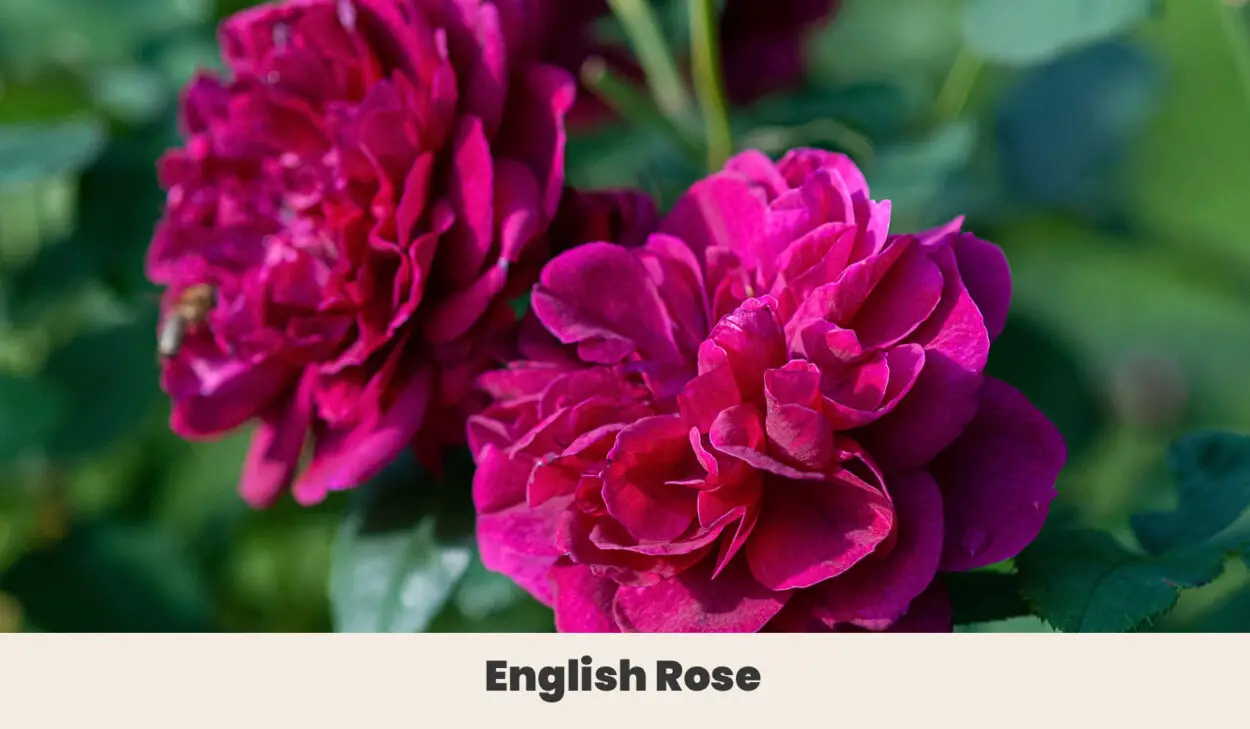
The English Rose is a favorite among ever-blooming garden escapes. It’s not common that sports and flowers have strong associations. But soccer enthusiasts may be surprised to learn that there’s a rose variety named for Wolverhampton’s home stadium.
The English rose variety ‘Molineux’ was developed by David Austin nurseries and named in tribute to the stadium of the same name. It’s a classic cottage rose, with a sweet fragrance and a lush gold the same hue as the Wolverhampton Wolves uniform.
| Botanical Name: | Rosa molineux |
| Growth Rate: | Slow |
| Native Range: | Man made hybrid |
| Hardiness Zones: | 5 to 9 |
| Soil Needs: | Tolerates all soil types |
| Exposure: | Full sun |
| Blooming Period: | Blooms continuously |
3. Eyebright (Euphrasia spp.)

Eyebright earns its name as a tonic to correct health problems of the eye. It’s a large genus, with around 450 different species found in alpine areas globally. The blooms are small and delicate, ranging from white to lavender and blue.
It’s a peculiar plant that develops a parasitic relationship with the plants around it, so be sure to plant it among grasses. It grows specialist roots that steal the nutrients from those around it so won’t thrive without companion plants. Needless to say, most gardeners consider this plant a weed while some simply appreciate its beauty.
| Botanical Name: | Euphrasia spp |
| Growth Rate: | Slow |
| Native Range: | Species found worldwide |
| Hardiness Zones: | 1 to 9 |
| Soil Needs: | Rocky or sandy soils with low fertility |
| Exposure: | Full sun |
| Blooming Period: | Fall |
4. Edelweiss (Leontopodium nivale)
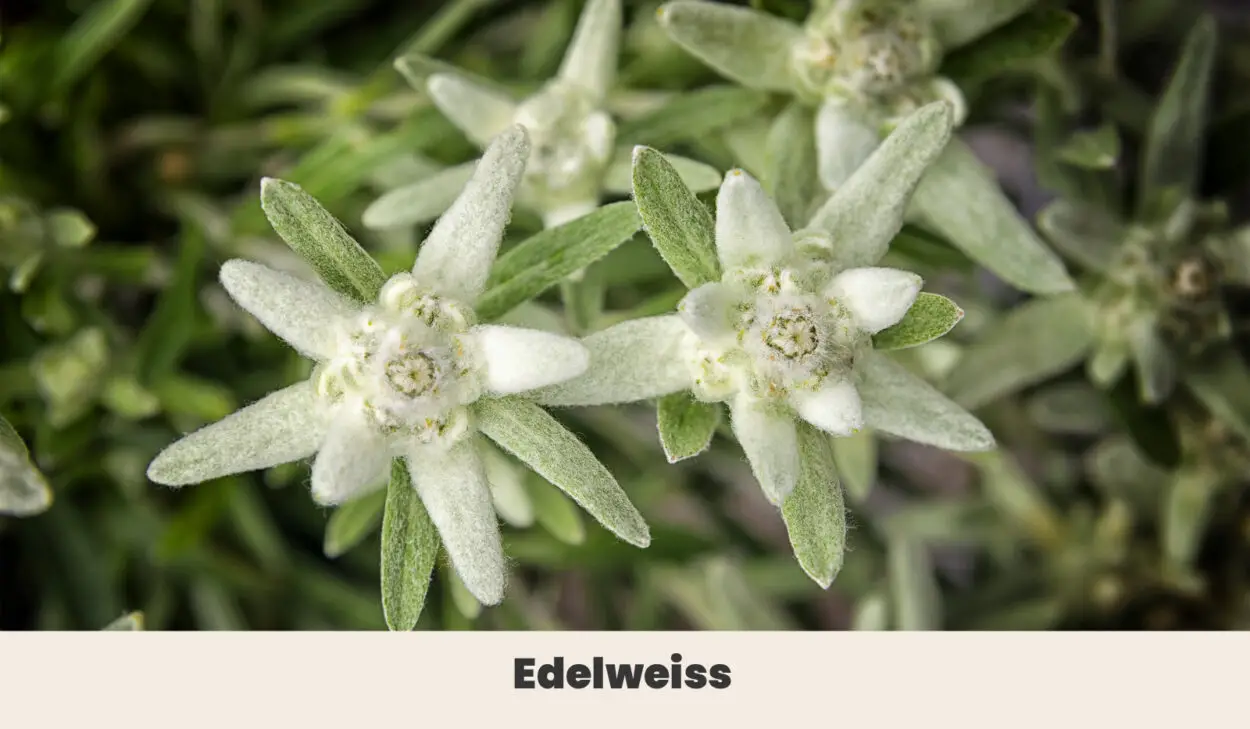
So common is low-growing edelweiss through mountainous ares of Europe that is has become a symbol of alpine living. It even has songs written about it, and appears on heraldry across the Alps.
It’s a small flower, a white star set among rich green foliage. Edelweiss needs high elevation and rocky, mountainous soil to thrive, but are not very hard to manage if your conditions are right. Even when pampered it’s short-lived, so enjoy it while it lasts.
| Botanical Name: | Leontopodium nivale |
| Growth Rate: | Slow |
| Native Range: | Alpine regions of Europe |
| Hardiness Zones: | 4 to 7 |
| Soil Needs: | Sandy, rocky soils |
| Exposure: | Full sun to partial shade |
| Blooming Period: | Spring |
5. Easter Lily (Lilium longiflorum)
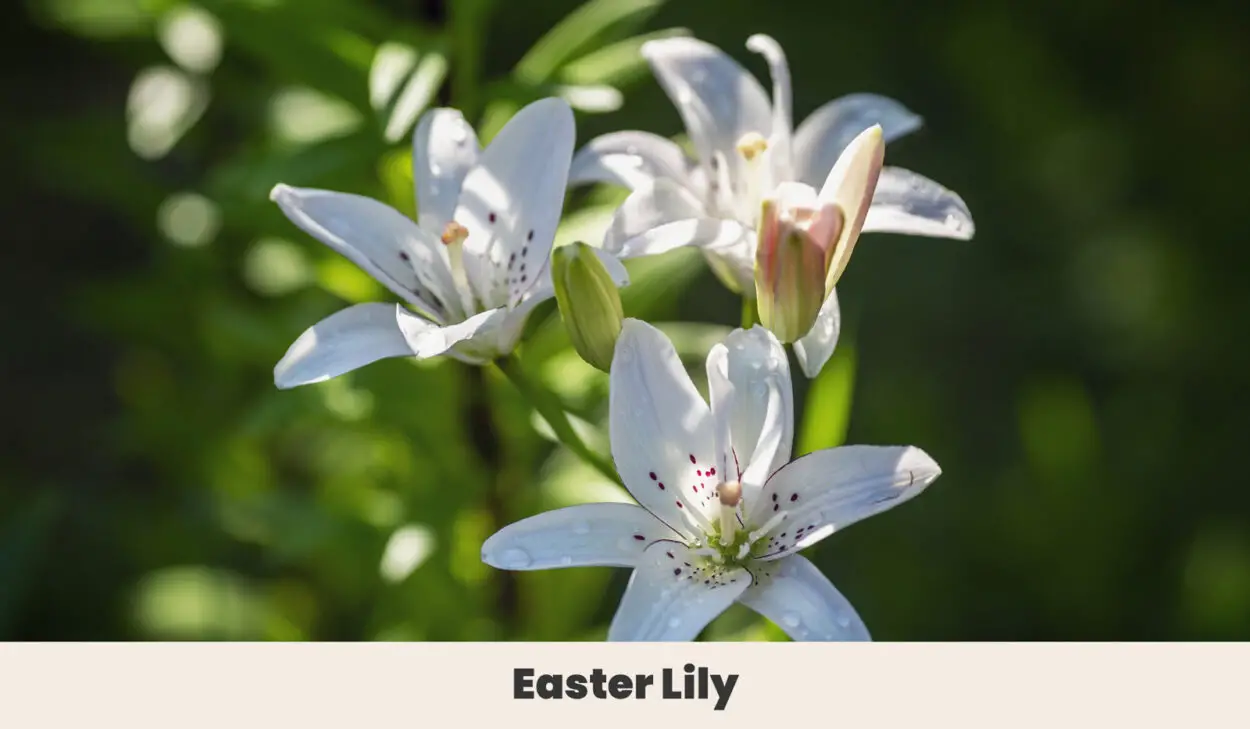
There’s a little miracle in each Easter lily bought blooming in stores during spring festivities. These elegant pale flowers are actually summer-blooming bulbs that take up to four years to reach maturity. Commercial growers meticulously plan their cultivation regimes to ensure the lily is in flower when its fans want it most.
For the home grower, it’s far easier to pop them in the ground and let them bloom on their own terms each summer. They can be left in the ground for extended periods with just a little mulch to keep them warm over winter.
| Botanical Name: | Lilium longiflorum |
| Growth Rate: | Fast |
| Native Range: | Taiwan and Japan |
| Hardiness Zones: | 7 to 9 |
| Soil Needs: | Well-draining sandy or loamy soil |
| Exposure: | Full sun |
| Blooming Period: | Summer |
6. Elderflower (Sambucus canadensis)

Elderflower bushes are woody shrubs that can reach around twelve feet (four meters) in height. They’re hardy and easy to grow, making them a great feature around pollinator beds or wildflower meadows.
They produce dense, frothy displays of tiny white flowers that are followed in short order by rich dark elderberries. Both flowers and fruit are edible, with the former an excellent additive to cordials and tonics, and the latter great in pies or baked goods.
| Botanical Name: | Sambucus canadensis |
| Growth Rate: | Moderate |
| Native Range: | North America, Venezuela, Brazil |
| Hardiness Zones: | 4a to 8b |
| Soil Needs: | Tolerates all soil types |
| Exposure: | Full sun to partial shade |
| Blooming Period: | Spring to summer |
7. Evening primrose (Oenothera biennis)
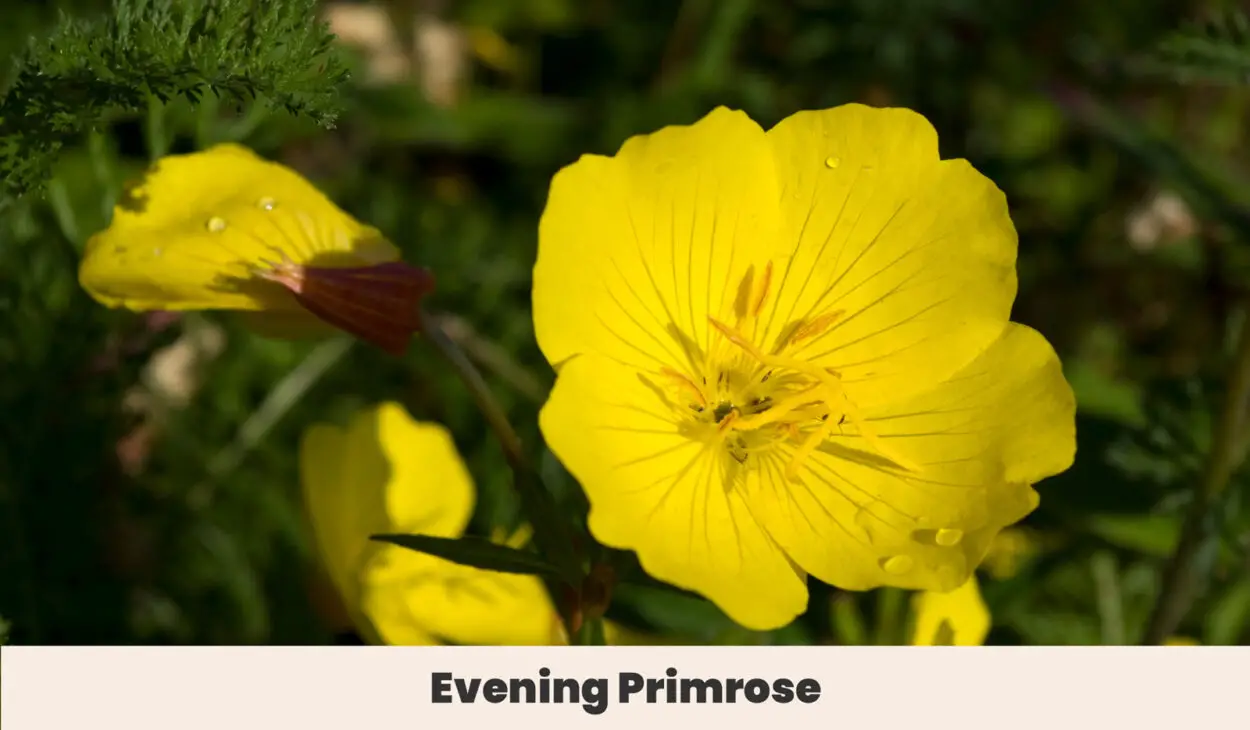
A shy night-blooming flower, the evening primrose earns its name with gently perfumed yellow flowers that open only at dusk. They use their lemony fragrance to attract their main pollinator, moths.
They also feed early foraging native bees and are a valuable addition to wildflower gardens. The flower is prized for its essential oil, which is said to have anti-aging properties.
| Botanical Name: | Oenothera biennis |
| Growth Rate: | Fast |
| Native Range: | North America and Canada |
| Hardiness Zones: | 4 to 9 |
| Soil Needs: | Most soil types if drainage needs are met |
| Exposure: | Full sun to partial shade |
| Blooming Period: | Spring to fall |
8. Egyptian Star Cluster (Pentas lanceolata)

It’s easy to see how the Egyptian star cluster gets its name – given the right conditions this shrub will be covered in clusters of star-shaped flowers. They range in color from white to purple, pink and red. The latter is a massive draw-card for hummingbirds, who can’t get enough of its sweet nectar. It’s also popular with butterflies and bees.
| Botanical Name: | Pentas lanceolata |
| Growth Rate: | Fast |
| Native Range: | Arabian peninsula, eastern Africa |
| Hardiness Zones: | 10-11 |
| Soil Needs: | Tolerates most soil types if drainage needs are met |
| Exposure: | Full sun to partial shade |
| Propagation: | Seed, cutting, division |
| Blooming Period: | Prune to restrict the height |
9. Everlasting (Xerochrysum bracteatum)

Many flowers change dramatically when cut and dried, but not so the Everlasting. Also known as the strawflower, this Australian native features gorgeous enduring flowers in shades of yellow, red, burgundy, and pink that lose none of their glory when preserved. Indeed, they are so everlasting that it’s hard to tell the difference between a dry and fresh flower.
| Botanical Name: | Xerochrysum bracteatum |
| Growth Rate: | Moderate |
| Native Range: | Australia |
| Hardiness Zones: | 8a to 10b |
| Soil Needs: | Well draining loam |
| Exposure: | Full sun to partial shade |
| Blooming Period: | Summer to fall |
10. Eared Coreopsis (Coreopsis auriculata)
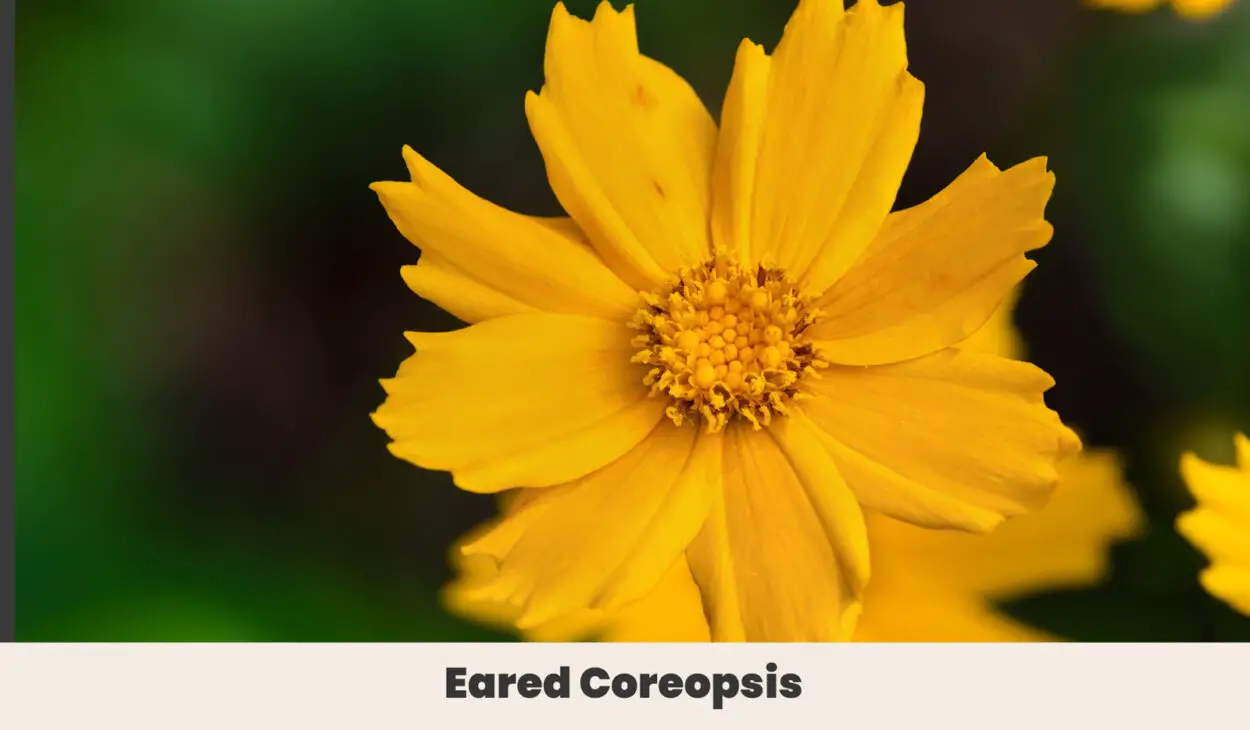
An easy-to-grow American native, this variety is also known as the dwarf coreopsis due to its compact size. It’s far more manageable than its cousins, as it is less prone to spreading out and taking over entire garden beds.
It produces vibrant golden flowers that attract friendly insects to the garden, making them an excellent border plant around wildflower displays.
| Botanical Name: | Coreopsis auriculata |
| Growth Rate: | Moderate |
| Native Range: | North America |
| Hardiness Zones: | 4-9 |
| Soil Needs: | Organically rich soils of most types |
| Exposure: | Full sun to partial shade |
| Blooming Period: | Spring |
11. Everlasting daisy (Coronidium elatum)
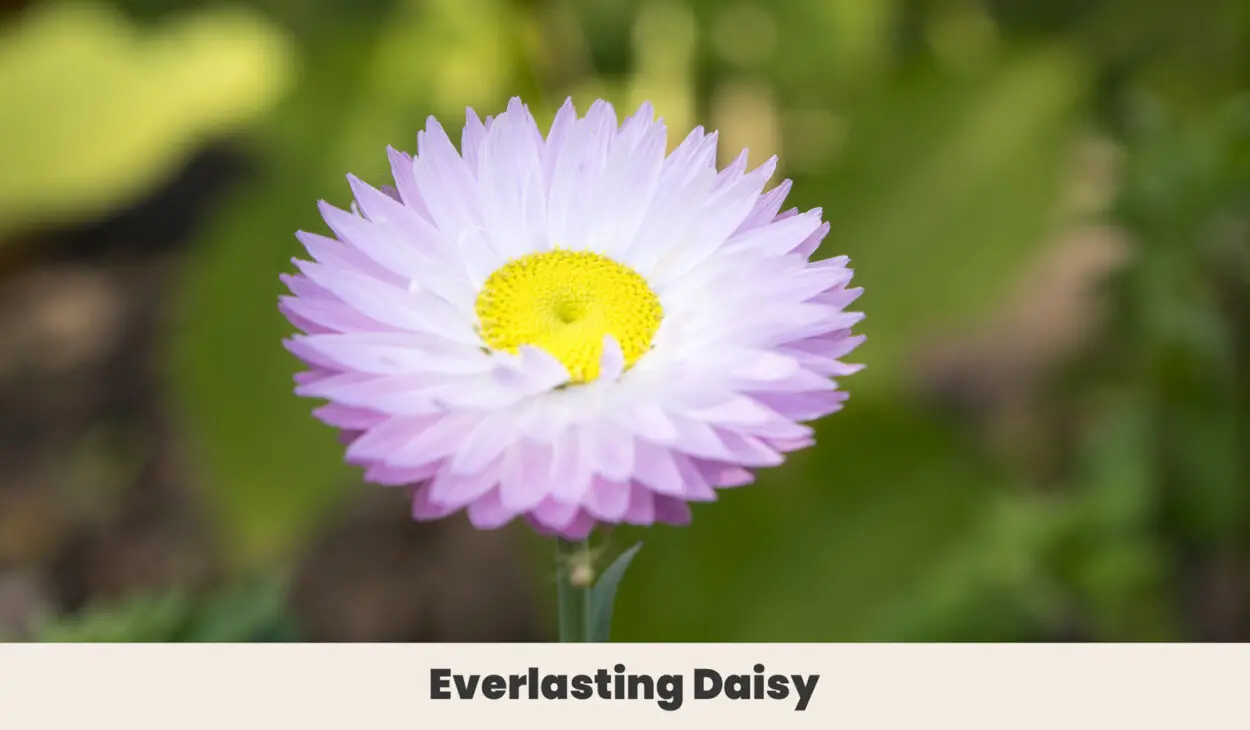
Not to be confused with the other everlasting on this list, the everlasting daisy is another tough Australian native ideal for rock gardens. It can reach two meters in height and produces cheery white flowers with characteristic golden centers that are often mistaken for daisies. They’re an underappreciated plant, perfect for dry regions, as they give a cottage garden feel without the high water requirements.
| Botanical Name: | Coronidium elatum |
| Growth Rate: | Fast |
| Native Range: | Eastern Australia |
| Hardiness Zones: | 8 to 10 |
| Soil Needs: | Free-draining soil of all types |
| Exposure: | Full sun |
| Blooming Period: | Spring |
Final thoughts
Edges and entryways are enriched by every extra extravagance of flowery excitement. Engage your energy and expand the enchantment with each example explained above. Easy or experimental, they elicit enjoyment, each and every one.

